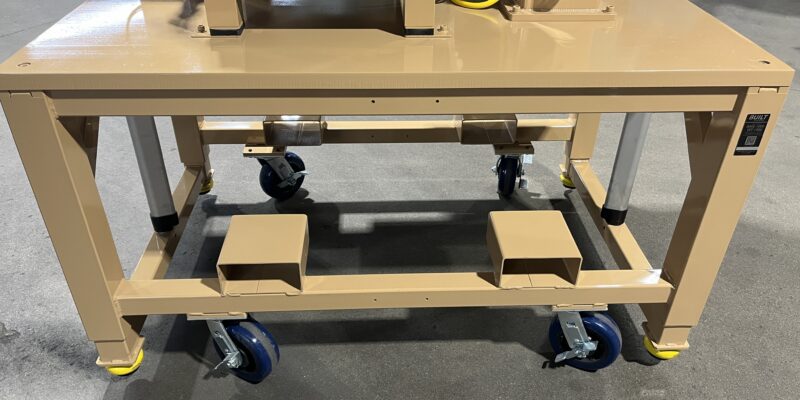In the realm of industrial automation, efficiency and precision are paramount. As technology advances, the demand for seamless integration of machinery and processes grows. One often-overlooked component that plays a significant role in optimizing feeding systems is the lift table. By partnering up with Built Systems we can offer a versatile solution that will enhance productivity, safety, and versatility within manufacturing environments.
Enhanced Ergonomics and Safety
One of the primary benefits of integrating lift tables into automation assembly lines is the improvement in ergonomics and safety for workers. In traditional assembly setups, employees may be required to manually lift heavy components or products to specific heights, leading to strain and potential injuries. Lift tables alleviate this burden by providing a stable platform for raising or lowering materials to ergonomic working heights.
By automating the lifting process, workers are no longer exposed to the risks associated with heavy lifting, reducing the likelihood of musculoskeletal injuries and promoting a safer work environment. Additionally, lift tables can be equipped with safety features such as perimeter guarding, safety interlocks, and emergency stop buttons, further mitigating potential hazards.
Increased Efficiency and Productivity
Automation assembly lines thrive on efficiency, and lift tables contribute significantly to streamlining workflows. These versatile devices can be seamlessly integrated into existing production lines, facilitating the smooth transfer of materials between workstations.
By eliminating manual lifting and positioning tasks, lift tables reduce cycle times and increase throughput. Operators can quickly and precisely adjust the height of the lift table to align with the requirements of each specific assembly process. This adaptability ensures optimal working conditions and minimizes downtime associated with reconfiguration.
Moreover, lift tables can be synchronized with other automated equipment, such as robotic arms or conveyor systems, further enhancing operational efficiency. This synchronized movement ensures seamless material flow and precise positioning, ultimately maximizing productivity on the assembly line.
Flexible Configuration Options
One of the standout features of lift tables is their versatility in configuration. They are available in various sizes, capacities, and configurations to suit diverse application requirements. Each table is equipped with a set of isolation feet, actuators, and roller casters. When the actuators are engaged the isolation feet make contact with the floor lifting the roller casters and main frame up in position. This allows the operator to roll the system anywhere in position and lift from that position thus eliminating the need for a forklift or crane.
Furthermore, lift tables can be customized with additional features and accessories to optimize functionality. Options such as tilt platforms, rotating tops, and powered conveyors expand the capabilities of lift tables, allowing for a more comprehensive range of operations within the assembly line.
Cost-Effective Solution
In addition to their operational benefits, lift tables offer a cost-effective solution for improving automation assembly lines. The initial investment in lift table technology is quickly offset by the long-term gains in efficiency, productivity, and safety. Reduced labor costs, minimized downtime, and improved product quality contribute to a tangible return on investment over time.
Moreover, lift tables require minimal maintenance, resulting in further cost savings throughout their lifecycle. Their robust construction and reliable performance ensure consistent operation, reducing the need for repairs or replacements.
Conclusion
In the dynamic landscape of industrial automation, every component plays a crucial role in optimizing efficiency and driving productivity. Lift tables stand out as indispensable assets in automation assembly lines, offering enhanced ergonomics, safety, efficiency, and flexibility.
By automating lifting and positioning tasks for vibratory feeder applications, lift tables empower manufacturing facilities to achieve greater throughput, reduce labor costs, and maintain a safe working environment for employees. As technology continues to evolve, integrating lift tables into automation assembly lines will remain a cornerstone of operational excellence in modern manufacturing.

